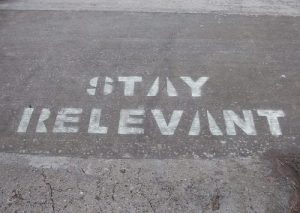There will always be exceptions to the rule, but in general ignoring the specific aspects of VR might not be a good thing. If you do, using the medium becomes an empty choice. The story could just as easily be told in a 2D movie. One of those aspects I have already talked about in my first blog: the fact that there is no fourth wall in VR is a result of the VR aspect presence.

‘Breaking’ the fourth wall in VR isn’t possible, because there is no fourth wall to begin with
So, how to make your story relevant to the medium? Not ignoring the specific aspects of VR isn’t enough. It means finding a way to use them to your advantage and learning what their positive side effects or interesting results are. It means finding the right way of focusing on the right VR aspect for the story you’re telling, so you can make the use of the medium more relevant. This is basically what this blog series will be about. It is the core of my theories on VR.
Now, what are those specific aspects of VR I keep talking about? For this blog I will still be on the subject of the aspect presence, but I know you’ll be asking me this question if I don’t tell you now. So here it goes, a little sneak peek into the blog series. One aspect is framelessness, the fact that this medium has no frame. Or actually it does, but the viewer is the one setting it. This means giving up some of the control to the viewer. It also has much effect on mise-en-scène and on how we should edit our material. We still have to find out how exactly to do these things, but using them will eventually make the story more relevant to the medium.
Another aspect of VR is the fact that it’s about putting the viewer in an other reality (I haven’t got a word for that one yet but I am open to suggestions). Personally I really like to use this aspect. Making it part of the story itself is what makes the use of VR instantly relevant. The last aspect I will tell you about in this blog is the degree of interactivity. In VR there is always some degree of interactivity. The lowest one is just letting the viewer look around. But using more and more interactivity will mean that there will be less and less room left for the story itself. In what way this aspect is relevant to relevance I don’t know exactly. I am working on that one.
Back to presence. There is one positive side effect of presence that the industry can’t seem to stop talking about: empathy. If you embrace the fact that the viewer is present, it can bring them closer to the characters of the story. Being in the same physical space as a character makes it easier for them to connect with you. Suppose a character acknowledges your presence, looks you straight in the eyes and opens up about his feelings. It is much harder to ignore those feelings compared to when they are not meant for you specifically. Oculus Story Studio is starting to get really good at this with ‘Henry’. I’ve only seen the trailer, but I already wanted to cautiously cuddle him.
VR might be resolving the ‘bystander effect’ of movies. The bystander effect is actually a psychological term. It means that when someone is in need of help in a crowded place, most people will just pass by because they don’t feel the responsibility to help. But as soon as someone does help, more people will follow. This means that when you’re the person in need, all you have to do is make one person help you. And how do you do that? By involving them. If you know someone’s name, you can call it out. If you don’t, you can just say “woman in the red scarf holding a sandwich, please help me!”
When you’re watching a movie in a movie theater, you are still part of a crowd, not involved in the lives of the characters on screen. In VR you are there with them. The only thing a character has to do is acknowledging you’re there, involving you in what is taking place.
Focussing on empathy is a good way to make the use of the medium relevant, as it is a big part of what the medium stands for. For this reason I like the fact that it’s mentioned and used so often at the moment. On the other hand, I have also heard people who are getting tired of the term. It looks like the word empathy is starting to lose its meaning due to overuse. I do hope people are ready to start looking for other positive side effects or interesting results of VR aspects to talk about. I know I am.
The next blog I will be writing about a VR aspect I haven’t mentioned yet. One that isn’t yet a reality for the medium: total immersion.

